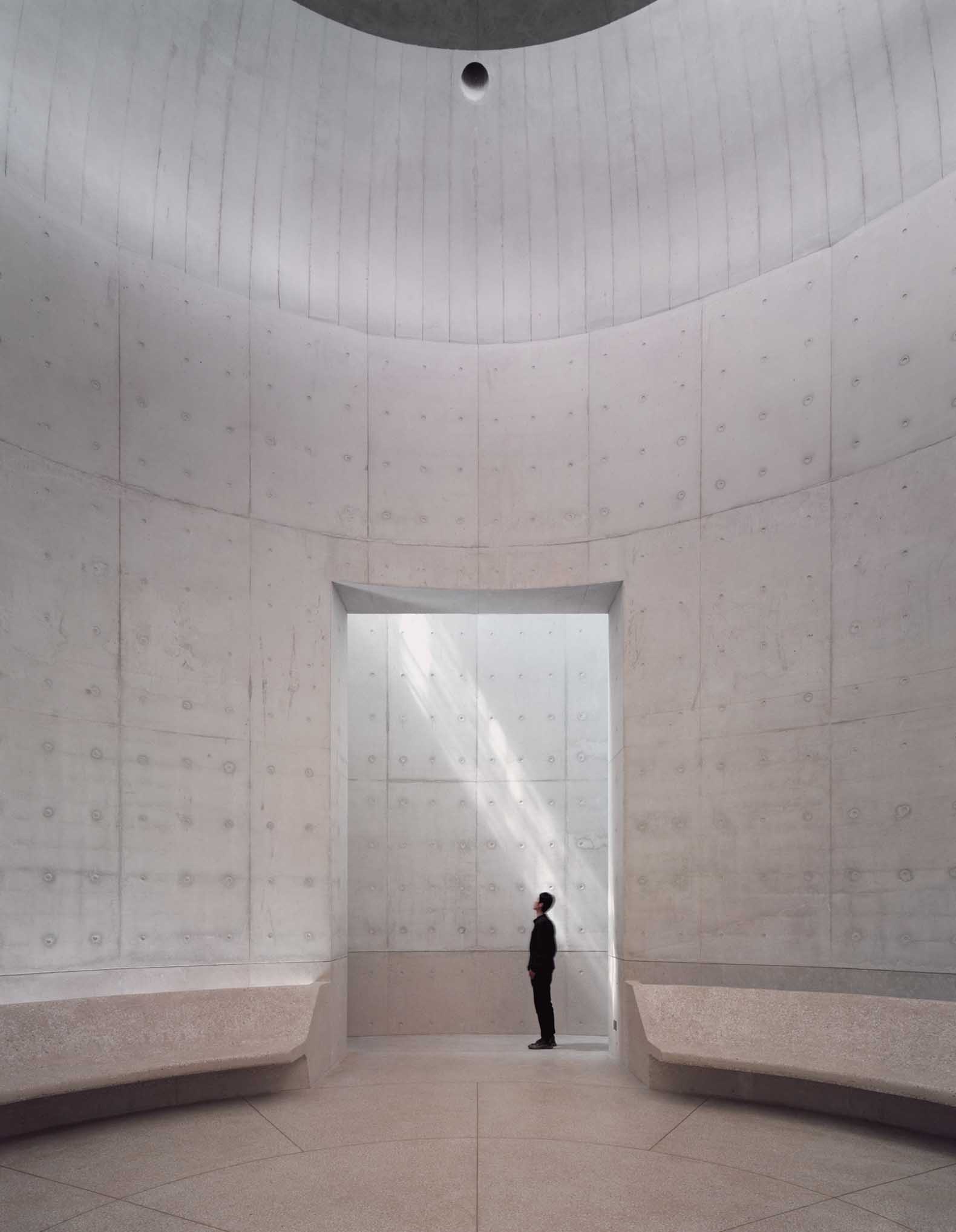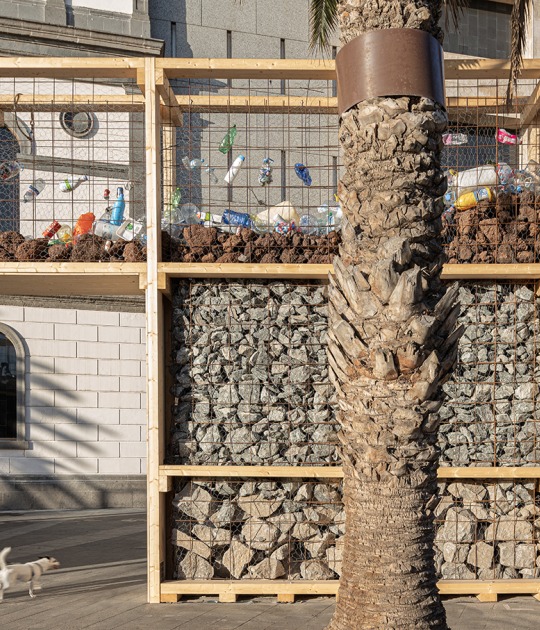The building is centrally located within the community, with three distinct facades that respond respectively to the flows of people accessing the plaza and the sea, defined by a harmonious coexistence with the city, creating several public spaces with diverse atmospheres and scales. The building is elevated off the ground and can be accessed via a long ramp that invites people toward the chapel to embark on an exploration of music and space.
The project was designed to pay special attention to the section, with the Meditation Rotunda with a stage at its center, on the lower level, and the Skylight Music Hall above it. Forty-eight spectators can be accommodated on two levels of seating surrounding the stage.
When performances unfold, the sound through the hall and travels down to the rotunda through nine brass sound transmission tubes. A large retractable circular pneumatic roof crowns the Music Hall, introducing a natural skylight. When the weather is nice, this roof ascends to transform the Music Hall into an open-air theater.
The Meditation Rotunda on the lower floor is nine meters high. By leaving a fifty-centimeter- wide gap with operable glass panels at the corner of walls, natural light softly diffuses through the corner gaps below, as well as from the upper gaps around the suspended stage.

Chapel of Music by Vector Architects. Photograph by Arch-Exist.

Chapel of Music by Vector Architects. Photograph by Hao Chen.
Project description by Vector Architects
The Chapel of Music is the fourth architectural project completed by Vector Architects in the Aranya Qinhuangdao community. It stands in contrast to its predecessors, including the Seashore Library, Seashore Chapel, and Restaurant y Sea, all of which enjoy direct seafront locations.
The chapel is anchored within the heart of the community plaza, known as Youyi Bay. Positioned slightly north of the plaza's center, it neighbors the canteen and market to the north, the residential apartments to the west, together with the hotels and shops to the south.

Chapel of Music by Vector Architects. Photograph by Hao Chen.
We envision this chapel as an exquisite musical instrument landing on the plaza. By orchestrating sound, light, and air, we aim to create a new type of music hall space. The origin of the design stems from the section. We vertically arranged the Meditation Rotunda at the lower level, while the Skylight Music Hall on top of it at the upper level. The Music Hall has a sunken stage in the center. Viewed from the Meditation Rotunda, it appears like a suspended disc.
Surrounding the stage, seats for forty-eight spectators are laid out in two levels. As the performance unfolds, the sound fills the hall and transmits down to the rotunda through nine brass sound transmission tubes embedded among the seatings. The Music Hall is crowned with a large retractable circular pneumatic roof, introducing the skylight. In favorable weather conditions, the roof ascends, transforming the Music Hall into an outdoor theater.

Chapel of Music by Vector Architects. Photograph by Arch-Exist.

Chapel of Music by Vector Architects. Photograph by Zaiye Studio.
The Meditation Rotunda on the lower floor is nine meters high. By leaving a fifty-centimeter- wide gap with operable glass panels at the corner of walls, natural light softly diffuses through the corner gaps below, as well as from the upper gaps around the suspended stage. Polished concrete seatings are arranged along the wall, resembling a lounge chair allowing people to recline naturally, and immerse themselves into the music, natural light, and the permeating breeze. On this deliberate solid volume of the Chapel, we've incorporated a large view window at the eastern façade, providing the audience with an opportunity to gaze at the sea horizon beyond as they exit after the concert.
The chapel is centrally located within the community, with three distinct building facets respectively responding to the flows of people entering the plaza and the sea. The three concave curves of the chapel’s outer walls are delineated for a harmonious coexistence with the three groups of adjacent buildings on the plaza, jointly creating various public spaces with diverse atmospheres and scales. By elevating the building from the ground, the open character of the plaza is maintained while also providing a shelter for people to rest. The entrance lobby, located on the raised first floor, is accessible via a long ramp slightly offset and parallel to the building’s curving east wall. The ramp faces the canteen and market on the northern side, inviting people while guiding the way into the chapel for embarking on an exploration of music and space.
































































